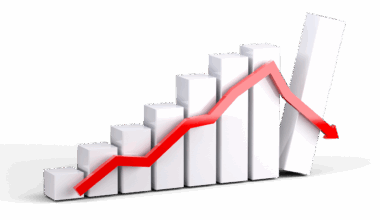The Relationship Between Depreciation and Cash Flow
Depreciation plays a crucial role in accounting as it allows businesses to allocate the cost of tangible assets over their useful lives. It is essential for financial reporting, tax purposes, and cash flow management. Companies typically use different methods of depreciation, like straight-line and declining balance, to reflect the expense of an asset’s use. This process directly impacts a business’s net income, as depreciation reduces taxable income. Furthermore, understanding the intricacies of depreciation aids in accurate budgeting and forecasting. Businesses need to account for both financial and operational impacts, ensuring a comprehensive view of asset management. Moreover, the choice of depreciation method influences the timing of cash flows, and therefore, it’s vital for companies to select a method that aligns well with their economic goals. Accurately calculating depreciation not only benefits accounting but also informs strategic decisions related to asset acquisition and rotation. Companies should regularly reassess their depreciation policies to optimize tax benefits and cash flows, ultimately ensuring better financial health and sustainability.
Impact on Cash Flow
Depreciation and cash flow are intricately connected, as depreciation affects the cash flow statement indirectly. It is important to note that while depreciation is a non-cash expense, it influences cash flow by reducing tax liabilities. When a business calculates its cash flows from operations, it adds back depreciation to the net income. This adjustment accounts for the non-cash nature of the expense, reflecting the actual cash generated during a specific period. As a result, depreciation can enhance a company’s cash position, making it vital for potential investors and stakeholders comparing different businesses. This added cash can potentially fund growth initiatives or reduce the need for external financing. Consequently, understanding how depreciation operates provides insights into a firm’s operational efficiency and may influence investment decisions. Furthermore, companies can strategically plan depreciation schedules to align with cash flow expectations, optimizing the overall financial health. By effectively managing depreciation, a firm can maintain sufficient liquid assets to navigate economic fluctuations and capitalize on business opportunities.
In addition to affecting taxable income, depreciation impacts various financial ratios essential for assessing a company’s financial health. Ratios like return on assets (ROA) and earnings before interest and taxes (EBIT) can be skewed due to depreciation. Investors often analyze these metrics to make investment choices based on profitability and efficiency. It’s essential to recognize that the depreciation method chosen can lead to significantly different financial reporting results. Although both straight-line and declining balance methods comply with accounting standards, their effects on cash flow and profit margins can vary dramatically. Strategic use of depreciation can lead to optimal tax planning benefits that result in increased future cash flows. Moreover, understanding the depreciation methods can provide crucial forecasting insights regarding future cash requirements. The essence of these financial operations revolves around making informed decisions on asset utilization, ensuring businesses can sustain growth while managing expenses. This knowledge equips management teams to make informed capital allocation decisions crucial to the long-term success of the organization.
Depreciation and Investment Decisions
Understanding the relationship between depreciation and cash flow is critical for effective investment decisions. When businesses plan investments in new assets, they must also consider depreciation expenses. The perceived value of assets and their depreciation rates can significantly impact future cash flows, which investors look at to determine a project’s feasibility. By accurately forecasting depreciation, companies can better identify optimal times to replace or upgrade their assets, enhancing operational efficiency. This insight is particularly significant in industries with rapidly changing technologies. Moreover, the ability to predict future depreciation allows organizations to plan their capital expenditures accordingly. They can time investments when cash flow is favorable, ensuring liquidity needs are met. Analysts often evaluate how different scenarios of depreciation impact future cash flows to derive conservative estimates of future performance. This further equips leadership teams to make sound financial decisions that align with strategic goals and market conditions. Consequently, knowledge of depreciation not only aids accounting but also provides vital data for enhancing operational capabilities and maximizing shareholder value.
The careful management of depreciation schedules can facilitate better budgeting practices within organizations. Accurate depreciation accounting encourages comprehensive reviews of asset values, leading to informed budgeting decisions. When budgeting for future expenses related to asset replacement, it’s indispensable to consider both the remaining value and the depreciation trajectory of current assets. Businesses can employ this data to establish an appropriate budget for replacements, ensuring cash availability when needed. Moreover, understanding depreciation impacts enables firms to implement effective procurement strategies for capital investments. By preserving cash flow and optimizing asset utilization, businesses can foster their long-term sustainability strategies. Working capital management often inclines towards incorporating depreciation as a pivotal aspect of financial forecasting. The relationship between cash flow and operational decisions regarding depreciation influences earnings management practices, allowing businesses to align their cash positions effectively. Strong budgeting foresight takes into account not only current assets but also plans for future capital needs, thus ensuring robust financial health and operational resilience. Therefore, organizations should consider incorporating depreciation strategies into their overall financial and operational planning.
Conclusion
In conclusion, the relationship between depreciation and cash flow plays an integral role in a company’s financial management. Businesses must understand this dynamic to navigate financial landscapes effectively. By accurately accounting for depreciation, firms can maximize tax benefits while ensuring positive cash flow, allowing for growth and sustainability. A well-structured depreciation plan aligns with operational strategies, assists in investment planning, and aids in creating robust budgets. Furthermore, leveraging insights into how depreciation influences cash flow can lead to improved decision-making regarding asset management and procurement strategies. Effective management of depreciation not only reflects compliance with accounting principles but also strengthens a company’s financial health. It engages all stakeholders, providing transparency into the firm’s operations and guiding them in their investment decisions. This understanding empowers businesses to adapt strategies as necessary amidst changing market conditions. Overall, competence in managing depreciation can usher firms toward enhanced profitability and sustained growth, ensuring they remain competitive in their industries. With the right strategies, companies can capitalize on depreciation as a means to improve cash flow while supporting long-term strategic objectives.
Ultimately, mastering the financial aspects of depreciation provides organizations a substantial edge in the marketplace. This knowledge equips businesses with tools to enhance cash management processes while improving asset utilization. Additionally, companies should continually educate their teams on best practices surrounding depreciation and its implications on cash flow. Ensuring that all staff understands these concepts creates an informed workplace and fosters strategic synergy across departments. By focusing on depreciation as an integral aspect of the accounting framework, organizations can align their operational and financial objectives cohesively. Moreover, understanding these nuances reinforces the organization’s culture of financial literacy and encourages proactive fiscal decision-making. Thus, solidified knowledge around depreciation will contribute positively to shaping the company’s financial trajectory. As businesses move forward, continuous improvement in their depreciation strategies is crucial to maintain operational agility and financial stability.
In conclusion, the synergy between effective depreciation accounting and cash flow management is vital for businesses. Those who prioritize understanding this relationship are more likely to enhance their overall financial strategies. By integrating knowledge about depreciation into financial planning, companies can derive more significant long-term benefits, fortifying their positions against potential economic challenges. Remaining vigilant makes organizations better prepared to navigate any financial landscapes efficiently. Additionally, this comprehension prompts businesses to reevaluate their capital allocation, ensuring every expense aligns with growing profitability. Finally, building a culture that values depreciation as a critical component of financial management fosters an environment of responsible stewardship. Relationships with investors, stakeholders, and market analysts strengthen through transparent financial practices. As businesses face the evolving financial landscape, emphasis on depreciation’s role in cash flow will ensure strategic resilience and sustainable growth.


